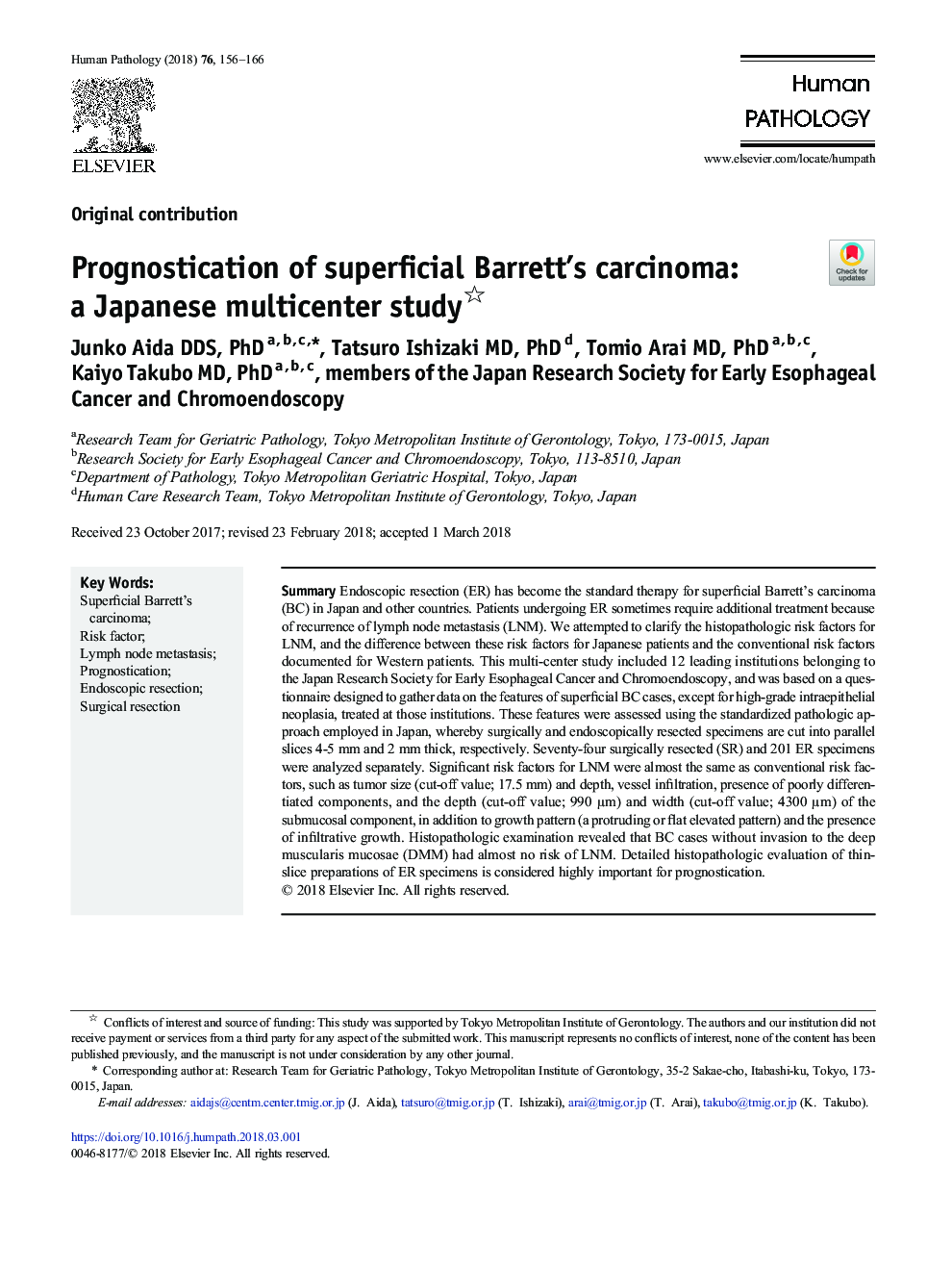| Article ID | Journal | Published Year | Pages | File Type |
|---|---|---|---|---|
| 8807535 | Human Pathology | 2018 | 11 Pages |
Abstract
Endoscopic resection (ER) has become the standard therapy for superficial Barrett's carcinoma (BC) in Japan and other countries. Patients undergoing ER sometimes require additional treatment because of recurrence of lymph node metastasis (LNM). We attempted to clarify the histopathologic risk factors for LNM, and the difference between these risk factors for Japanese patients and the conventional risk factors documented for Western patients. This multi-center study included 12 leading institutions belonging to the Japan Research Society for Early Esophageal Cancer and Chromoendoscopy, and was based on a questionnaire designed to gather data on the features of superficial BC cases, except for high-grade intraepithelial neoplasia, treated at those institutions. These features were assessed using the standardized pathologic approach employed in Japan, whereby surgically and endoscopically resected specimens are cut into parallel slices 4-5 mm and 2 mm thick, respectively. Seventy-four surgically resected (SR) and 201 ER specimens were analyzed separately. Significant risk factors for LNM were almost the same as conventional risk factors, such as tumor size (cut-off value; 17.5 mm) and depth, vessel infiltration, presence of poorly differentiated components, and the depth (cut-off value; 990 μm) and width (cut-off value; 4300 μm) of the submucosal component, in addition to growth pattern (a protruding or flat elevated pattern) and the presence of infiltrative growth. Histopathologic examination revealed that BC cases without invasion to the deep muscularis mucosae (DMM) had almost no risk of LNM. Detailed histopathologic evaluation of thin-slice preparations of ER specimens is considered highly important for prognostication.
Related Topics
Health Sciences
Medicine and Dentistry
Pathology and Medical Technology
Authors
Junko DDS, PhD, Tatsuro MD, PhD, Tomio MD, PhD, Kaiyo MD, PhD, members of the Japan Research Society for Early Esophageal Cancer and Chromoendoscopy members of the Japan Research Society for Early Esophageal Cancer and Chromoendoscopy,
